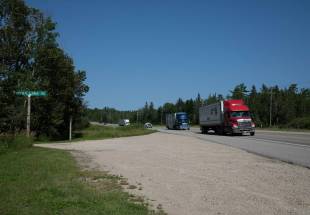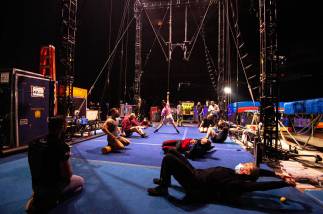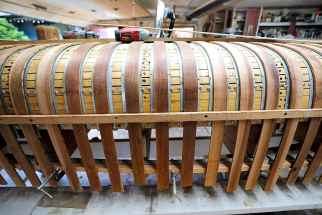Bow-to-stern bespoke Hit the water in style with Red River Canoe & Paddle’s custom crafts
Read this article for free:
or
Already have an account? Log in here »
To continue reading, please subscribe:
Monthly Digital Subscription
$0 for the first 4 weeks*
- Enjoy unlimited reading on winnipegfreepress.com
- Read the E-Edition, our digital replica newspaper
- Access News Break, our award-winning app
- Play interactive puzzles
*No charge for 4 weeks then price increases to the regular rate of $19.00 plus GST every four weeks. Offer available to new and qualified returning subscribers only. Cancel any time.
Monthly Digital Subscription
$4.75/week*
- Enjoy unlimited reading on winnipegfreepress.com
- Read the E-Edition, our digital replica newspaper
- Access News Break, our award-winning app
- Play interactive puzzles
*Billed as $19 plus GST every four weeks. Cancel any time.
To continue reading, please subscribe:
Add Free Press access to your Brandon Sun subscription for only an additional
$1 for the first 4 weeks*
*Your next subscription payment will increase by $1.00 and you will be charged $16.99 plus GST for four weeks. After four weeks, your payment will increase to $23.99 plus GST every four weeks.
Read unlimited articles for free today:
or
Already have an account? Log in here »
Hey there, time traveller!
This article was published 05/08/2022 (1223 days ago), so information in it may no longer be current.
LORETTE — The 55th annual Douglas Monias Canvas Canoe Race was held last weekend at Cross Lake, 770 kilometres north of Winnipeg, and although Douglas Ingram wasn’t there in person, he was definitely there in spirit.
RUTH BONNEVILLE / WINNIPEG FREE PRESS Douglas Ingram, owner of Red River Canoe & Paddle in Lorette, makes everything from hand-built instruments to furniture, but his primary focus nowadays is wooden canoes.
Of the 18, five-and-a-half-metre-long, two-person canoes entered in the gruelling event, which required participants to paddle 30 kilometres a day, for three days in a row, six, including the winner powered by Herman Chubb and Clifford Grieves, were built by Ingram under the banner Red River Canoe & Paddle.
Having a half-dozen of his boats on the water simultaneously was a “pretty good turnout,” concedes Ingram, whose Lorette-based venture turned 30 years old earlier this year. And while the majority of his work lately revolves around so-called, Cross Lake racing canoes — he put the finishing touches on his 14th two weeks ago, and the framework of what will ultimately be No. 15 sits directly behind him, atop a miscellany of sawhorses — he sells six models altogether, as well as various styles of hardwood paddles.
Just don’t expect to see any completed projects sitting around his double-garage-turned workshop, waiting for a buyer, any time soon.
“A large investment of time and material goes into this type of work, so everything I do is made to order,” he explains, turning his phone around to show a video of his handiwork in action, from a previous summer’s Cross Lake race.
“You never know specifically what somebody is going to want, so rather than deal with situations like, ‘That’s a great-looking canoe, but do you have it in red?’, I chose to go the custom route, a long time ago.”
Ingram, 59, fell in love with canoeing at age 15, when he dipped a paddle into the water for the first time, at a wilderness camp run by the provincial government. Six years later, by which time the then-Birds Hill resident was enrolled in the University of Manitoba’s fine arts program, he set about building his own cedar-and-fibreglass canoe, using the book Canoecraft by Ted Moores as a guide.
RUTH BONNEVILLE / WINNIPEG FREE PRESS Ingram averages making six to seven new canoes a year.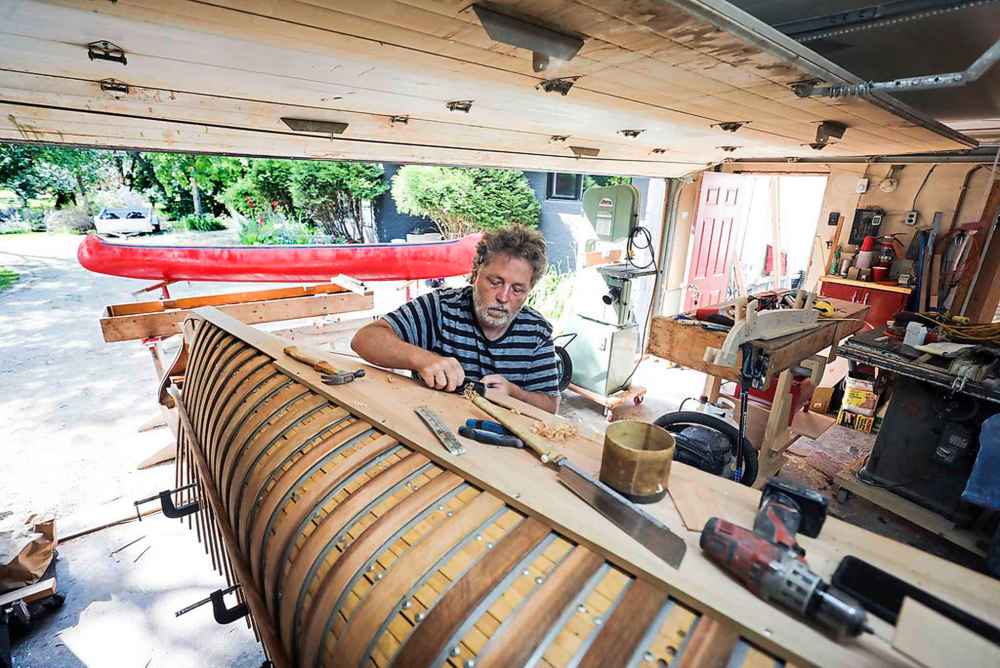
The project took close to a year to complete. Shortly thereafter, he was back at it. Why fashion a second canoe when the first one was perfectly serviceable?
“Have you ever met a baker who was satisfied with their first loaf of bread?” he answers. “Of course not. They either want to perfect what they came up with, or move on to a different flavour. It was the same way with me, only with canoes.”
Ingram, who also has a bachelor of education degree, finished university in 1990, right around when his and his wife’s first of three children was born. His goal was to teach art and social studies, except he was unable to land a full-time position owing to an unfortunate combination of declining enrolment paired with a glut of instructors nowhere near retirement age.
Because school divisions weren’t hiring, and because he had to support his young family, he took a job with the Red Cross teaching canoeing. That, in turn, led to people requesting his services to repair canoes that weren’t exactly in shipshape.
RUTH BONNEVILLE / WINNIPEG FREE PRESS Ingram’s new project has the ribs in place. 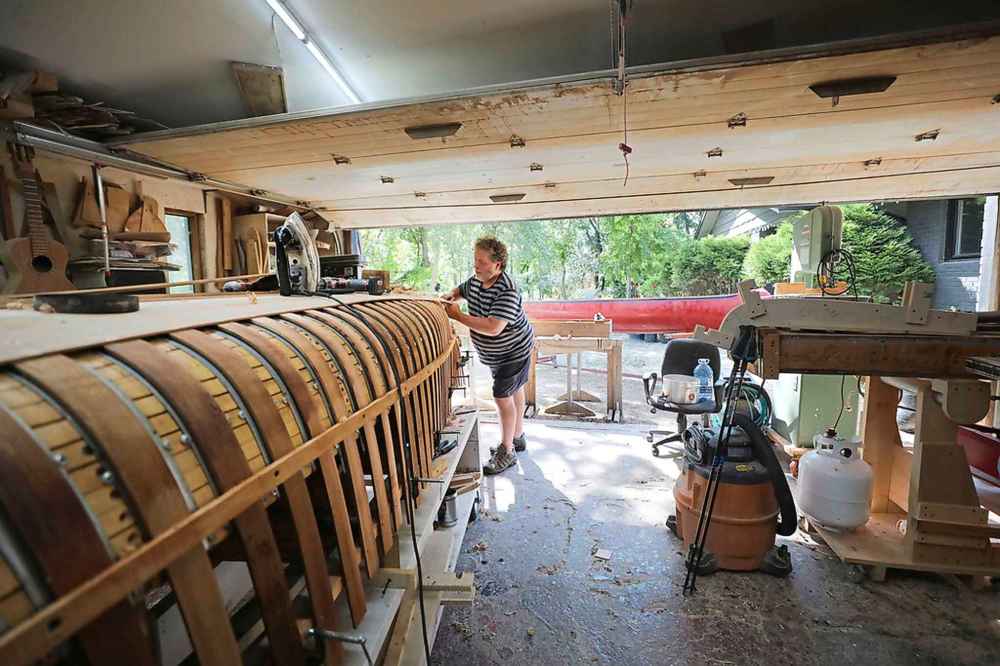
It was while he was performing those repairs that he got a true understanding of what went into building a canoe from scratch. He founded Red River Canoe & Paddle in 1992, and, largely through word of mouth, began accepting orders from people in the market for a boat he promised would be steps above what they were spotting in the sporting goods aisle of the nearest big box store.
“I was never going to be able to compete with large manufacturers that were turning out what, to me, were ordinary-type canoes, so the solution was to try and take things to the next level, by building a premium product,” he says. That meant working closely with interested parties to decide, for example, what kind of trim woods they were interested in, or, in the case of a paddle, ensuring it fit their grip precisely.
“I come from a family that just goes and does stuff,” he goes on. “One experience, one event, one piece of learning leads to another and over time, you begin to realize, ‘I can do that,’ if you simply put your mind to it.”
Ingram was working away one morning in May 2001 when his phone — a rotary phone, he clarifies — began to ring. He picked up the handset and was greeted by a person who introduced herself as “Vanessa, from Frantic Films.”
RUTH BONNEVILLE / WINNIPEG FREE PRESS Ingram hopes to pass on the skills he’s learned to the next generation of canoeists.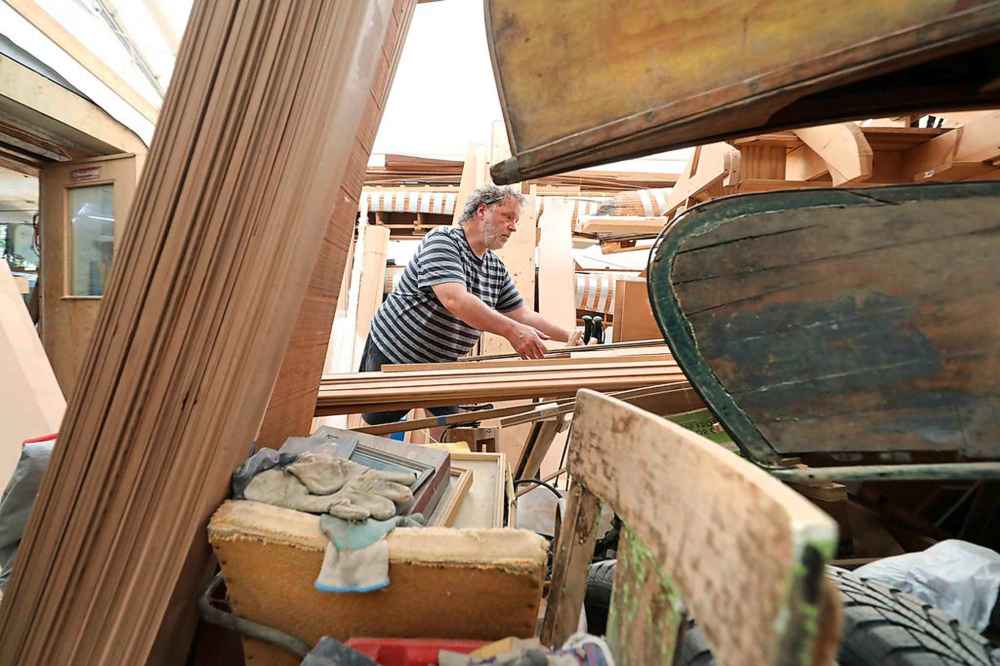
It turned out the caller was associated with the History Network, which was producing a documentary that would call on willing participants to recreate a hellish journey undertaken by fortune seekers during the Klondike Gold Rush, by navigating an era-specific canoe hundreds of kilometres from Alaska to Dawson City, Yukon. They needed a person to build a canoe that wouldn’t have looked out of place in the 1890s, and had been told he was probably their best bet.
He would be happy to help them out, he remarked, but first, he needed to know what sort of time frame she was looking at. Two weeks, came the answer. That would be next to impossible, he replied. To which she shot back, what if they paid him more money?
That would probably do the trick, he agreed, and when the four-part series began airing in February 2003, that was his sweat-and-blood viewers spotted on-screen, traversing first Lake Lindeman and later, the mighty Yukon River.
RUTH BONNEVILLE / WINNIPEG FREE PRESS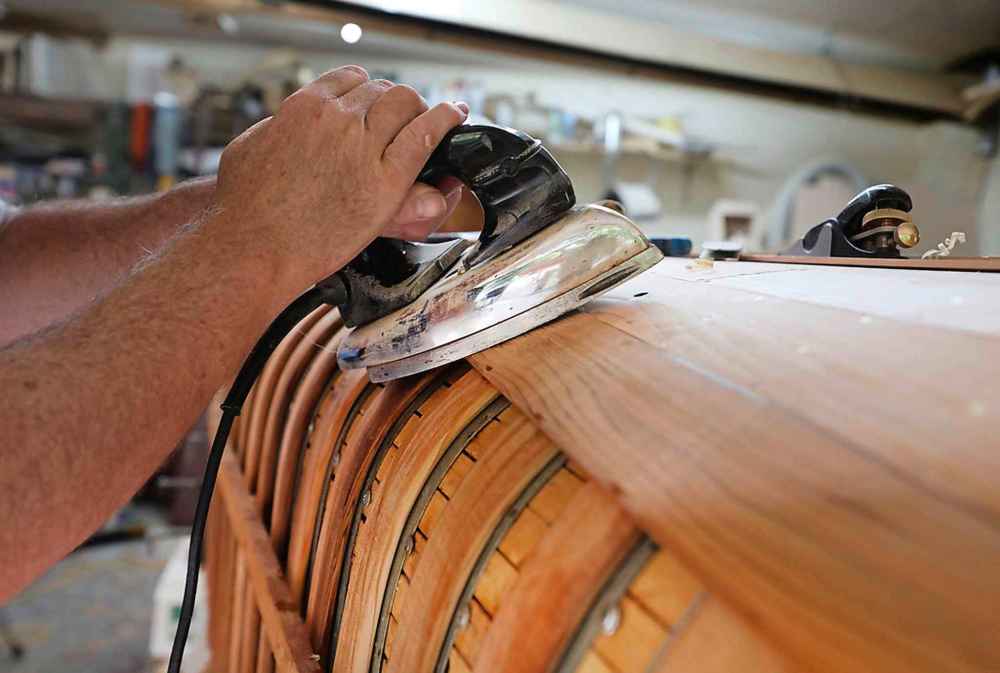
Andre and Mary Lacabanne were already customers of Ingram’s, having bought a number of his paddles, when they approached him in 2007 with a special request. They owned a vessel built by the Kildonan Canoe Company in the 1950s that they adored, but found to be too heavy for portaging. They were wondering if he could build them an exact replica of what they called Sophie, so-named for the previous owner who had told them a heartwarming story about her late husband courting her in that exact craft, when they were first dating.
“Doug picked the boat up from our place and after doing all the measurements and making a mould of it, he was able to create an entirely new canoe that was 20 pounds lighter, and just as strong,” Andre says, mentioning if you go to the Canadian Canoe Route website (myccr.com), the green model Ingram came up with is featured at the top of the screen.
The Lacabannes, who do the majority of their canoeing in northern Manitoba, say they can’t launch Sophie II without somebody — “everybody,” Mary interjects — commenting on its exquisite workmanship. Also, where did they get it, people want to know?
“To me, Doug is an artist, whose medium just happens to be wood,” Andre continues. “Everything he does has the eye of an artist and I’m not sure there isn’t anything he can’t do. I mean, he can make you a cello if you ask him to.” (He’s not kidding; a few years ago, Ingram built a gorgeous, viola da gamba for his wife, a cellist, just to prove to himself he could.)
“To me, Doug is an artist, whose medium just happens to be wood.” – Andre Lacabanne
Ingram currently has about a year’s worth of orders on the books — he averages six to seven new canoes per year — but admits he hasn’t always been as busy as he is nowadays. His is a niche market — not everybody can afford a canoe that starts in the range of $5,000, or a $250 paddle — and there have definitely been occasions when he was working on one project without knowing when he’d get paid next.
“I’ve never been unemployed, but there have definitely been occasions when I didn’t feel like I had employment security,” he says. “My wife would be projecting through our budget, asking about money coming in down the road, and I’d tell her I had one more order and nothing after that. But then an order comes in, you dodge that bullet, and then your phone rings again. And here we sit, however many years later.”
Next summer, Ingram hopes to cut back on his work schedule by entering “semi-retirement.” He broke his neck at the age of 16 in a swimming accident and the lingering effects from that injury, mainly muscle spasticity coupled with balance and co-ordination issues, make it exceedingly arduous to be on his feet, bending ribs and affixing gunnels, five days a week, 10 hours a day.
RUTH BONNEVILLE / WINNIPEG FREE PRESS Ingram currently has about a year’s worth of orders on the books.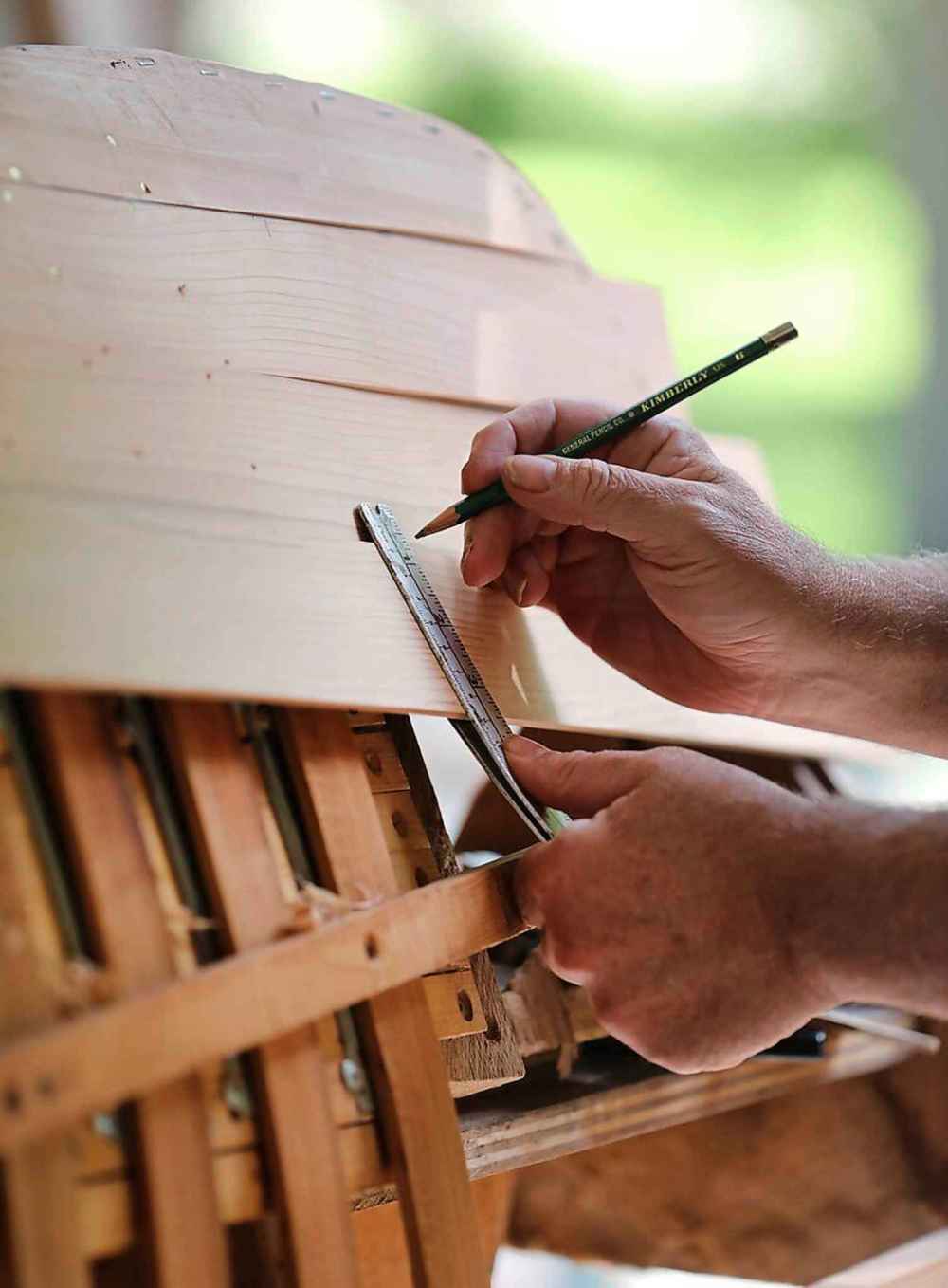
And while he doesn’t imagine ever parking his radial arm saw for good, his intention is to get back into teaching, by serving as, in his words, the mentor he never had, when he was starting out.
“I think it’s important to pass the skills I’ve acquired on to the next generation of canoeists. I’ve taught (canoe building) a number of times through the years, including at a high school in Cross Lake, but those were just one-off types of things. What I’m really hoping to do is build a community of builders, where people can turn to one another for advice or guidance, if they ever need to.”
As for his personal output, even though he is humble to a fault, Ingram acknowledges canoes he’s built for people from all over North America will continue to be put to good use, for generations to come.
“A 20-year-old canoe like the one over there is what I consider to be pretty new,” he says, pointing out a specimen due for a fresh paint job. “Heck, if you’re asking me, a canoe doesn’t even reach middle age till it’s 50 or 60. The same as us, right?”
For more information, go to redrivercanoe.ca
david.sanderson@freepress.mb.ca
Dave Sanderson was born in Regina but please, don’t hold that against him.
Our newsroom depends on a growing audience of readers to power our journalism. If you are not a paid reader, please consider becoming a subscriber.
Our newsroom depends on its audience of readers to power our journalism. Thank you for your support.
History
Updated on Saturday, August 6, 2022 12:49 PM CDT: removes html in deck

